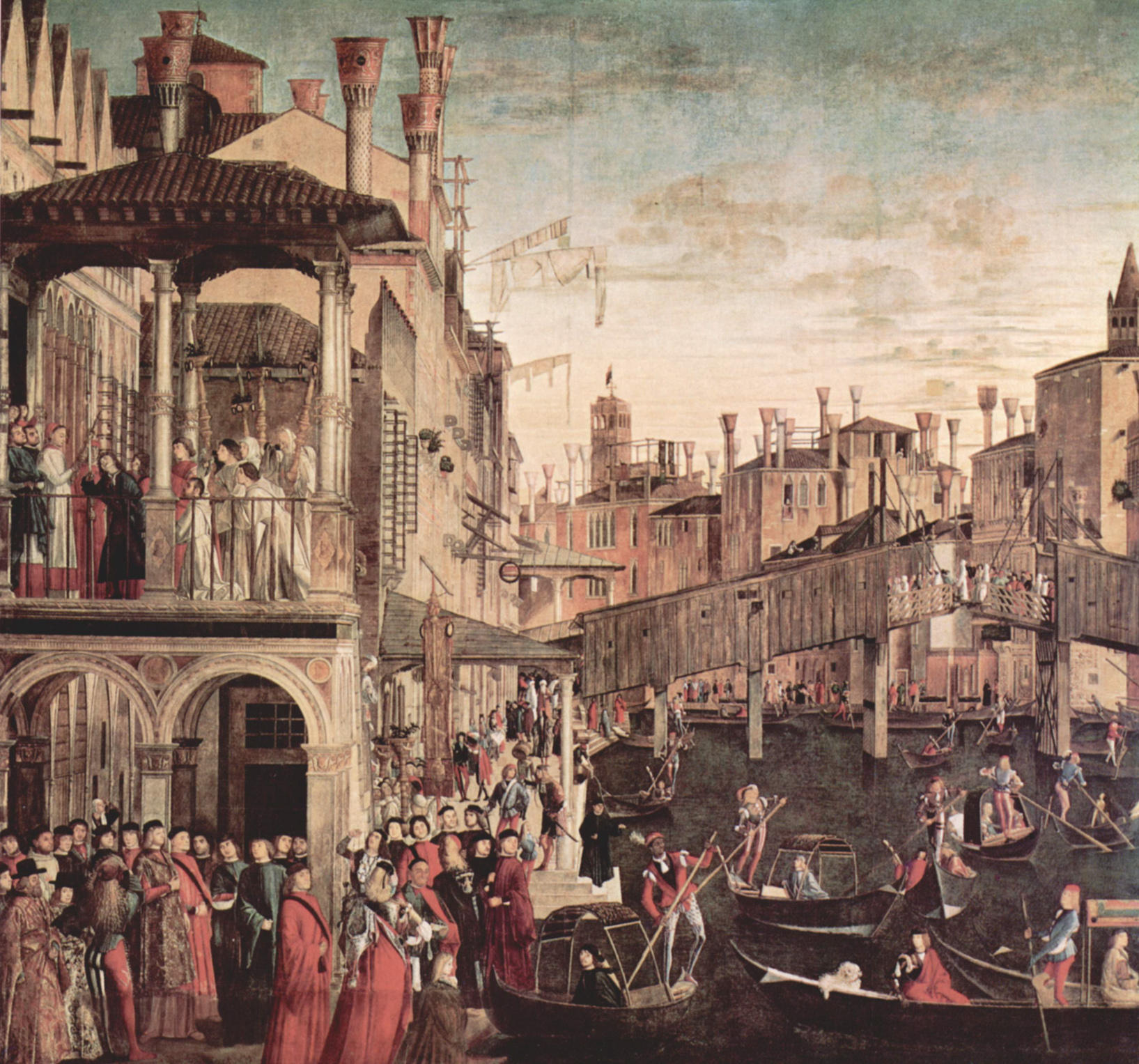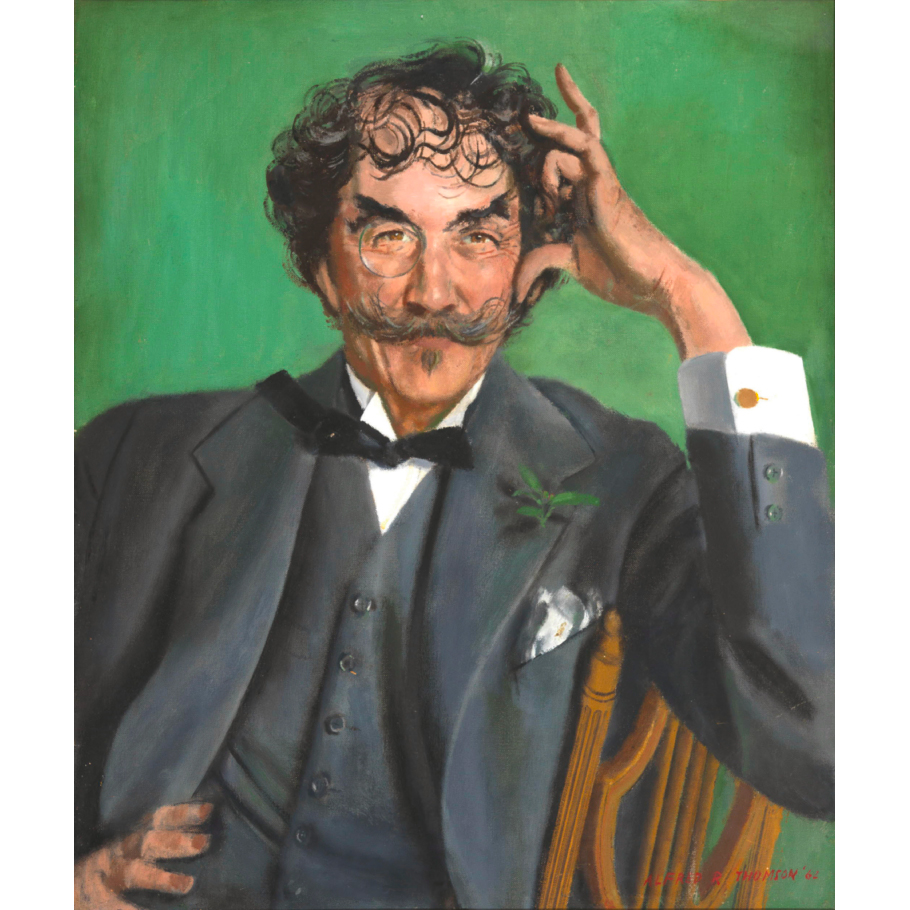My Favourite Painting: Peter Sheppard
Peter Sheppard, The Norfolk Churches Trust, chooses a Venice 'snapshot' that still captures the character of the city more than 500 years after it was painted.


Peter Sheppard on his choice, Miracle of the Relic of the Cross at the Ponte di Rialto by Vittore Carpaccio
'I first saw this painting when I was 18 and I vowed that, one day, I would live in Venice.I bought a piano nobile in Cannaregio built only 20 years before this picture was painted. Venice has been the most profound influence of my life in design and architecture. It is a rare city that has retained its character, defying modern life.This richly painted work is a snapshot of Venice in 1496, with everyone beautifully depicted in their richly coloured apparel going about their business. Venice is not too dissimilar today.
Peter Sheppard is chairman of The Norfolk Churches Trust, former chairman of the Catholic Herald and the owner of Wolterton Park in Norfolk.
John McEwen comments on Miracle of the Relic of the Cross at the Ponte di Rialto
In 1396, Philippe de Mézières (Filippo Maser), chancellor of the Kingdom of Cyprus and Jerusalem, presented a wood fragment from the True Cross, on which Christ was crucified, to the Scuola Grande di San Giovanni brotherhood in Venice.
Venice eventually had several ‘grand schools’ or charitable and religious organisations for the laity. Unlike the governmental Great Council, restricted to nobles, the grand schools were open to all citizens. Typically, there was a prominent headquarters, with an affiliated hospital and church.
The True Cross fragment duly resulted in miracles. It became such a venerated object that, at the end of the following century, the San Giovanni brotherhood commissioned nine prominent Venetian artists — Carpaccio, Gentile Bellini and Perugino among them — each to paint a picture celebrating a specific miracle caused by the relic. The series remained in the brotherhood’s principal hall until all but the lost Perugino were presented to the Accademia in 1820, after the Napoleonic occupation and fall of the Venetian Republic.
Carpaccio’s scene is distinguished by his characteristic and inexhaustible taste for pictorial stories, which made him a favourite choice of the brotherhoods. The work is also known as ‘The Healing of the Madman’, the Madman being seen in black confronted with the holy reliquary on the terrace of the left-hand building.
Venetian cosmopolitanism is everywhere apparent in the busy market area by the Rialto Bridge: Armenians in black hats, turbaned Turks and Arabs, two African gondoliers, as the procession of white-robed members of the Scuola stretches back across the bridge and a distant woman shakes a carpet from a window.

My Favourite Painting: Finlay Scott
The philanthropist Finlay Scott chooses an unusual portrait of Whistler which captures some of the great man's spirit.
Sign up for the Country Life Newsletter
Exquisite houses, the beauty of Nature, and how to get the most from your life, straight to your inbox.
Country Life is unlike any other magazine: the only glossy weekly on the newsstand and the only magazine that has been guest-edited by HRH The King not once, but twice. It is a celebration of modern rural life and all its diverse joys and pleasures — that was first published in Queen Victoria's Diamond Jubilee year. Our eclectic mixture of witty and informative content — from the most up-to-date property news and commentary and a coveted glimpse inside some of the UK's best houses and gardens, to gardening, the arts and interior design, written by experts in their field — still cannot be found in print or online, anywhere else.
-
 Six rural properties with space, charm and endless views, as seen in Country Life
Six rural properties with space, charm and endless views, as seen in Country LifeWe take a look at some of the best houses to come to the market via Country Life in the past week.
By Toby Keel
-
 Exploring the countryside is essential for our wellbeing, but Right to Roam is going backwards
Exploring the countryside is essential for our wellbeing, but Right to Roam is going backwardsCampaigners in England often point to Scotland as an example of how brilliantly Right to Roam works, but it's not all it's cracked up to be, says Patrick Galbraith.
By Patrick Galbraith
-
 'As a child I wanted to snuggle up with the dogs and be part of it': Alexia Robinson chooses her favourite painting
'As a child I wanted to snuggle up with the dogs and be part of it': Alexia Robinson chooses her favourite paintingAlexia Robinson, founder of Love British Food, chooses an Edwin Landseer classic.
By Charlotte Mullins
-
 The Pre-Raphaelite painter who swapped 'willowy, nubile women' for stained glass — and created some of the best examples in Britain
The Pre-Raphaelite painter who swapped 'willowy, nubile women' for stained glass — and created some of the best examples in BritainThe painter Edward Burne-Jones turned from paint to glass for much of his career. James Hughes, director of the Victorian Society, chooses a glass masterpiece by Burne-Jones as his favourite 'painting'.
By Charlotte Mullins
-
 'I can’t look away. I’m captivated': The painter who takes years over each portrait, with the only guarantee being that it won't look like the subject
'I can’t look away. I’m captivated': The painter who takes years over each portrait, with the only guarantee being that it won't look like the subjectFor Country Life's My Favourite Painting slot, the writer Emily Howes chooses a work by a daring and challenging artist: Frank Auerbach.
By Toby Keel
-
 My Favourite Painting: Rob Houchen
My Favourite Painting: Rob HouchenThe actor Rob Houchen chooses a bold and challenging Egon Schiele work.
By Charlotte Mullins
-
 My Favourite Painting: Jeremy Clarkson
My Favourite Painting: Jeremy Clarkson'That's why this is my favourite painting. Because it invites you to imagine'
By Charlotte Mullins
-
 The chair of the National Gallery names his favourite from among the 2,300 masterpieces — and it will come as a bit of a shock
The chair of the National Gallery names his favourite from among the 2,300 masterpieces — and it will come as a bit of a shockAs the National Gallery turns 200, the chair of its board of trustees, John Booth, chooses his favourite painting.
By Toby Keel
-
 'A wonderful reminder of what the countryside could and should be': The 200-year-old watercolour of a world fast disappearing
'A wonderful reminder of what the countryside could and should be': The 200-year-old watercolour of a world fast disappearingChristopher Price of the Rare Breed Survival Trust on the bucolic beauty of The Magic Apple Tree by Samuel Palmer, which he nominates as his favourite painting.
By Charlotte Mullins
-
 My favourite painting: Andrew Graham-Dixon
My favourite painting: Andrew Graham-Dixon'Lesson Number One: it’s the pictures that baffle and tantalise you that stay in the mind forever .'
By Country Life